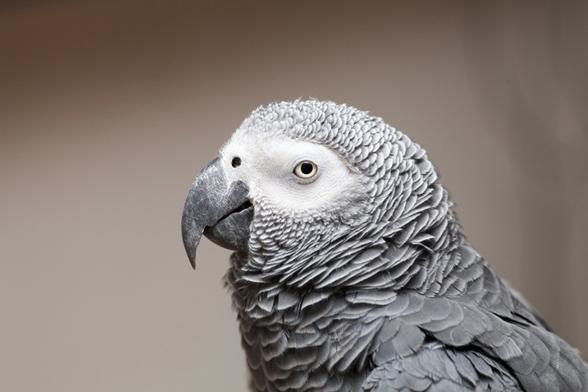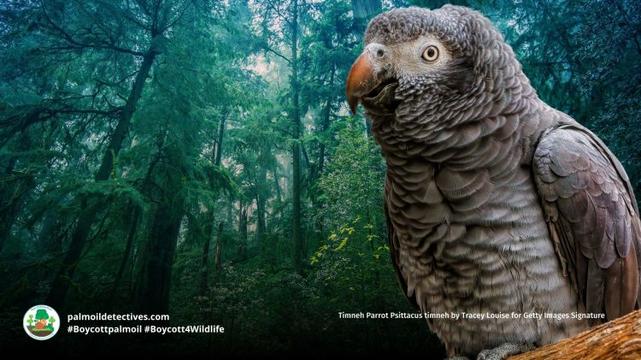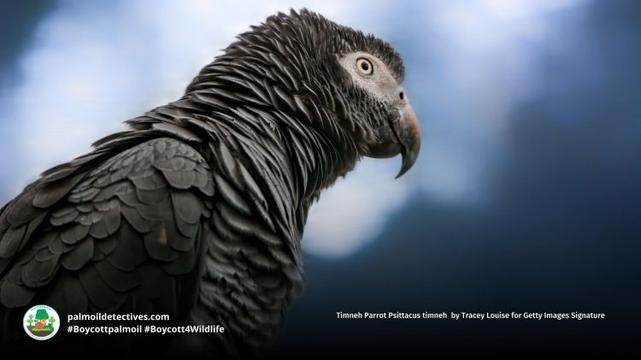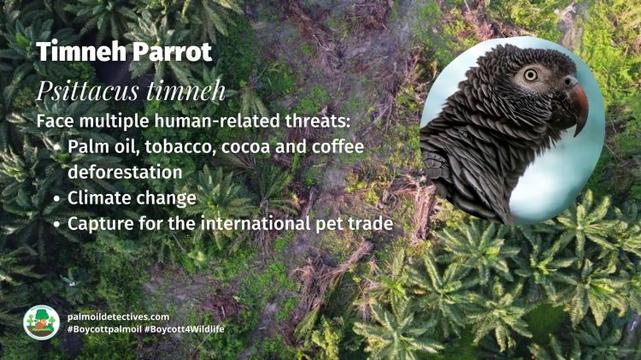African grey parrots help each other in times of need
It’s not only some mammals who help each other in times of need. The cleverest birds: crows, magpies and ravens do as well. They are critically endangered in #Africa due to the #pettrade and #deforestation. Help them by joining the #Boycott4Wildlife
Corvids – birds such as ravens, crows, and magpies – and parrots are considered to be special among birds, as they have unusually large and densely packed brains. They show many cognitive capacities that are linked to an advanced understanding of their surroundings. This has earned them the name “feathered apes”. A recent study has found that it’s not only crows and ravens who help one another – grey parrots do as well.
There are a few observations of helping behaviours in non-human animals. For example, vampire bats provide food to other group members and save them from starvation. In more experimental settings, in which scientists can better control the environment, chimpanzees helped each other get a tool that is out of reach, while bonobos even provided help to strangers.
But some animals, like monkeys, don’t. This raises the question of how helping behaviours evolved. And are they limited to great apes and humans only, or is this capacity also present in other (non-mammalian) species?
Corvids – birds such as ravens, crows, and magpies – and parrots are considered to be special among birds, as they have unusually large and densely packed brains. They show many cognitive capacities that are linked to an advanced understanding of their surroundings. This has earned them the name “feathered apes”. But in recent studies, researchers found that crows and ravens did not help another.
Parrots had not yet been tested, so we decided to find out about their helping behaviours. We tested two parrot species – African grey parrots and blue-headed macaws – and found that the African grey parrots recognised when the other was in need, and would help as a result.
African grey parrots. Eric Isselee/ShutterstockThe experiment
Both parrot species in our study are threatened by extinction in the wild. As a result, we conducted the study with captive parrots belonging to the Loro Parque Foundation, a Spanish conservation non-governmental organisation, in Tenerife. These parrots were well habituated to humans and more than willing to work for some nut rewards.
We trained the birds individually to pick up and place a metal ring, or token, into the open hand of an experimenter. In return for this action, we handed them a piece of walnut as a reward. Once the birds could reliably do this, we placed a pair of parrots into a test room that was separated into two smaller compartments.
We gave tokens to one bird. But its hole facing the experimenter was blocked. This meant that it could not exchange the tokens for food. Its neighbour, however, was able to perform this action. But it was missing the tokens.
In the first trial, Bird A received 10 tokens and could pass them to Bird B. Only Bird B could exchange these tokens for food, while Bird A did not receive any food for performing this action. In the second trial, the roles were reversed and now Bird B could transfer tokens to Bird A, while only Bird A could exchange them for food.
The parrot with the tokens did not receive any immediate rewards for helping out their partner during the trial. This made it a selfless act. But following each trial, the roles were reversed and birds could pay back the received favours.
We found that the African greys reciprocated help, and gave more tokens to their partner if they also received a lot of help before.
We also did two control tests. This was because we weren’t able to draw any conclusions about the parrots’ underlying motivation to help each other from the experiment. They could, for example, be playing or trying to bring the tokens closer to the human hand.
In one control, the parrots couldn’t exchange tokens for food. If the birds still transferred tokens to their partner, we could attribute this to their intrinsic motivation to play with objects.
In another control, we wanted to find out if the birds were transferring tokens based on a selfish motivation. We tested the birds without a partner present, consequently, no one on the other side could exchange the token for food. Under these conditions, it wouldn’t make sense for the parrot to transfer the tokens into an empty compartment unless they were trying to help themselves by bringing the tokens as close as possible to the experimenter’s hand.
The African greys were able to discriminate between conditions in which help was needed or useless. They transferred fewer tokens if no one was present on the other side, or if the partner could not exchange the tokens for food. However, if the partner could use the tokens and exchange those for food, they readily gave their partner tokens.
This demonstrated that they understood the task and their partner’s action-based goal: exchange tokens for food.
The blue-headed macaws, on the contrary, generally gave very few tokens to their partners. In fact, they acted rather selfishly, trying to bring the tokens as close as possible to the experimenter’s hand – whether or not another bird was on the other side.
Cognitive capacity
This result is very interesting, as it shows that the cognitive capacity to help another individual in need is present also in a non-mammalian species.
Birds and mammals shared their last common ancestor around 300 million years ago. Considering that monkeys and corvids don’t help each other, our findings suggest that the cognitive capacity for helping behaviours evolved multiple times during evolution, independently from one another.
Essentially, facing similar ecological and social pressures can lead to the evolution of the same cognitive capacities for coping with them.
In the case of the African grey parrots, considering they live in large flocks of up to 1,200 individuals, they need to keep track of multiple social interactions at a time: who did I interact with yesterday, was it positive or negative?
They would need to remember these interactions, as they might not see particular individuals every day.
Blue-headed macaws, on the contrary, were observed in smaller flocks of only around 10 individual in the wild. Living in smaller flocks means there’s less social information to store as the group composition potentially stays rather constant.
It would therefore make sense for parrots, which live in complex societies – with group compositions that change often – to have enhanced cognitive abilities.
Désirée Brucks, Postdoctoral Researcher, Swiss Federal Institute of Technology Zurich and Auguste von Bayern, Researcher, Max Planck Institute
This article is republished from The Conversation under a Creative Commons license. Read the original article.
#Africa #AfricanGreyParrot #AfricanNews #AnimalBiodiversityNews #animalCommunication #animalIntelligence #animalRights #BlueStreakedLoryEosReticulata #cognition #deforestation #News #Parrot #Parrots #PesquetsParrotPsittrichasFulgidus #pettrade #TanimbarEclectusParrotEclectusRiedeli #TimnehParrotPsittacusTimneh




